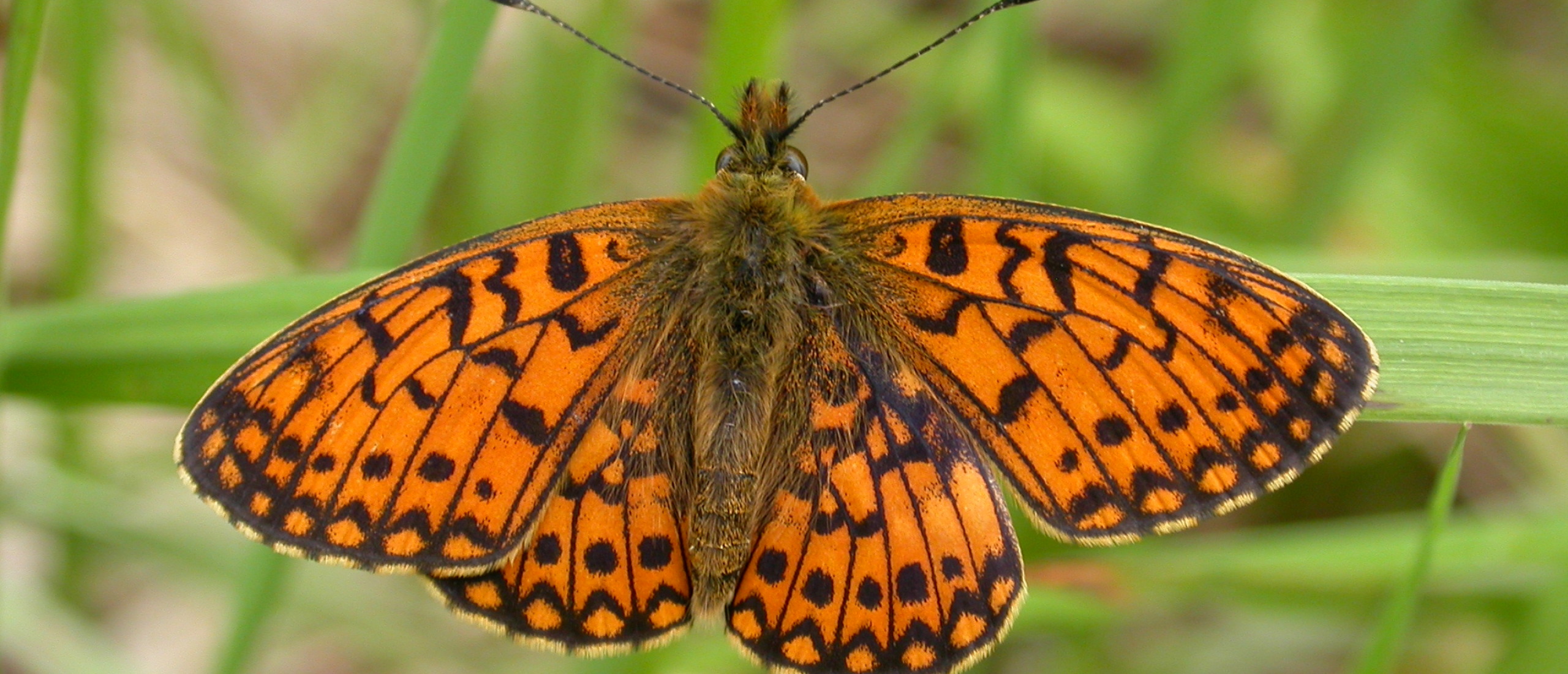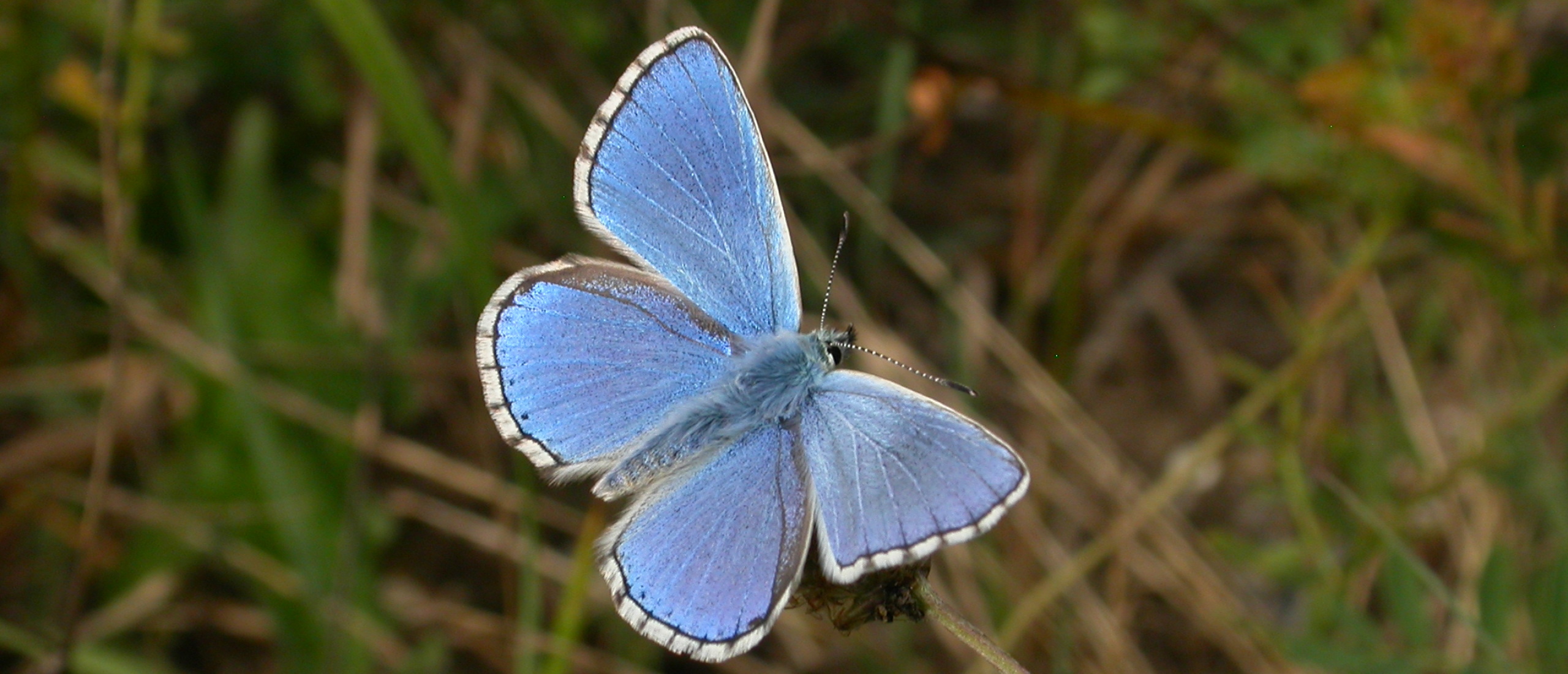
Butterflies of the Cranberry Bogs Following the first really spring-like day here in the Netherlands, I realise that I must hurry on to complete my hypothetical butterfly list for 2013, in which I am adding those species that I should have seen to those that I actually found. My total list came to 77 species, but after that I "added" another five, bringing me to an imaginary total of 82 when I wrote my last diary entry. Today's post concerns two butterflies that are relics of the last Ice Age, and which are more at home in Scandinavia, but which just survive in a few tiny, isolated bogs in the province of Drenthe, in the north-east of the Netherlands. Here, creeping over the sphagnum moss in these swampy areas, the extraordinary, stringy plants of Cranberry, Vaccinium oxycoccos, can be found, and it is on this diminutive plant that these two butterflies depend, namely the Cranberry Fritillary, Boloria aquilonaris, and the Cranberry Blue, Vacciniina optilete.
 The tiny flowers of Cranberry, larval foodplant of both butterflies
The tiny flowers of Cranberry, larval foodplant of both butterflies
Although I have seen both in previous years, in 2013 I failed to make the journey north to their specialised habitat during their short flight season in June/early July, although I did visit an area in the east of Belgium, where the Fritillary does occur but the Blue does not, as well as a reserve just over the border into France where the Fritillary certainly occurred until recently, but I failed to see it in either place.
 Former Cranberry Fritillary habitat which is becoming overgrown
Former Cranberry Fritillary habitat which is becoming overgrown
On one occasion when I visited the minuscule bog that I know in Drenthe that still harbours the Cranberry Fritillary, I happened to be holding the butterfly book open at the page with the illustration of the butterfly on it...and one actually landed next to its own image in the book!
 A Cranberry Fritillary next to its own image in the book
A Cranberry Fritillary next to its own image in the book
The Cranberry Fritillary next to its own distribution map Much effort has been made to try to link the few remaining bogs in which the butterfly occurs by cutting trees and creating corridors along which the adult butterflies could fly, but with little success, and it now looks as though the species' outposts in the Netherlands may be doomed. The populations on the high plateaux in eastern Belgium are doing marginally better, but even their future hardly looks secure. However, luckily the species is widespread in Scandinavia, so it is not in immediate danger overall. The same holds true for the Cranberry Blue, Vacciniina optilete, and its Dutch populations are equally endangered. I tend to see this attractive species in an area of bogland bordered by a low ridge that is covered with Juniper and Crowberry, from which it is possible to spot the rather dark, almost purplish adults fluttering over the wetter ground below. [singlepic id=1716 w=320 h=240 float=center] A male Cranberry Blue showing the dull, purplish blue upperside Like the Fritillary, the Cranberry Blue is common in Scandinavia, and I have seen many in southern Norway. Here the butterfly may be seen in a wider range of habitats, including rocky moorland.
 A Cranberry Blue in southern Norway, where it is much commoner than in the Netherlands
A Cranberry Blue in southern Norway, where it is much commoner than in the Netherlands
Had I seen these two boreal bogland specialists, plus the five species already mentioned, my 2013 list would have reached: 84 species











